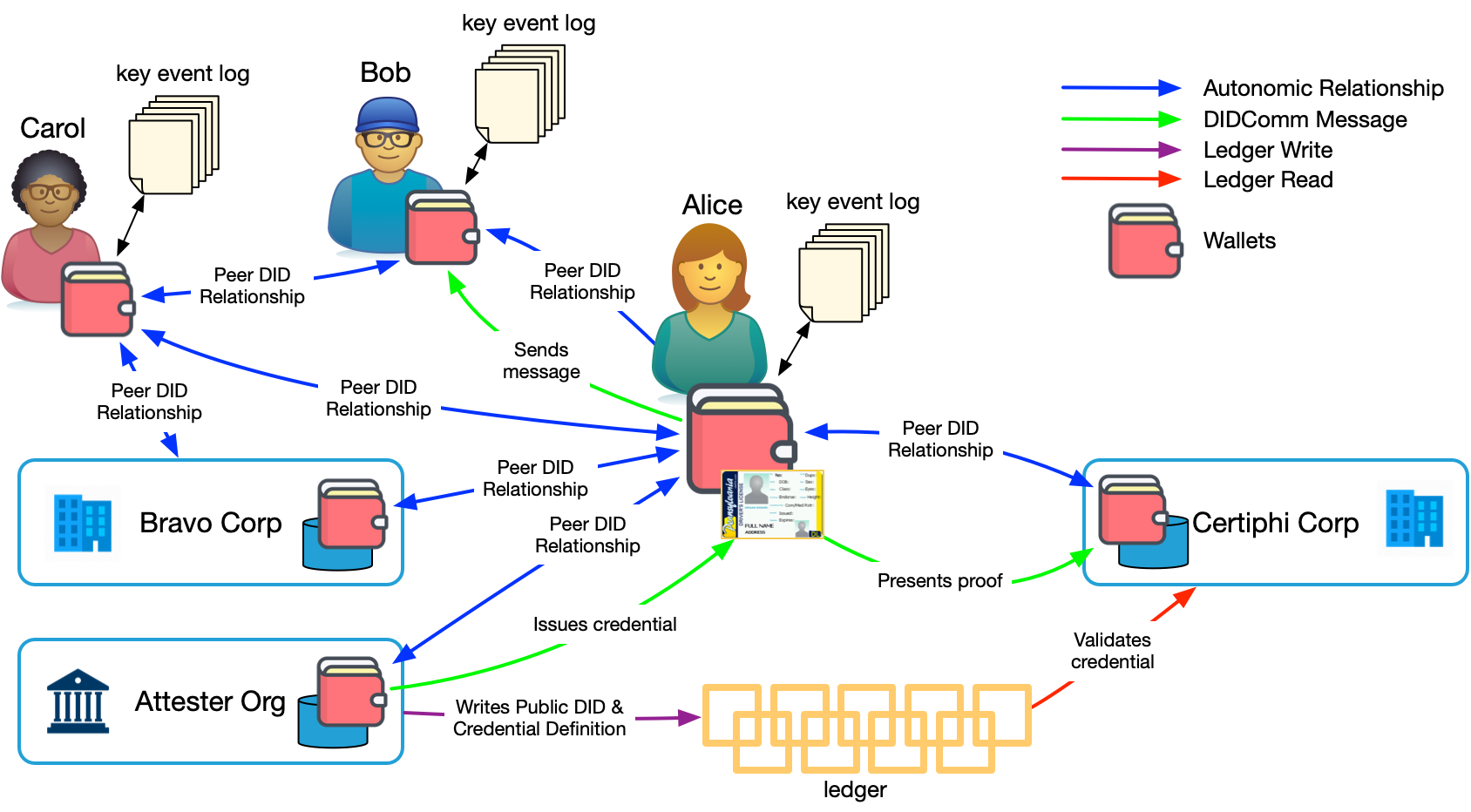Summary
Self-sovereign identity must be the foundation of Web3 because it is the means for framing ourselves in the digital world and taking action with our peers.

I continue to work on how to describe and explain digital embodiment and it's importance in creating our future digital world. In The Stack (Chapter 18), Benjamin Bratton talks about borders, framing, and sovereignty. He quotes Elizabeth Grosz who says
The earth can be infinitely divided, territorialized, framed. ... Framing is how chaos becomes territory. Framing is the means by which objects are delimited, qualities unleashed and art is made possible.
[The frame] is the particular contribution of architecture to the taming of the virtual, the territorialization of the uncontrollable forces of the Earth. It is the frame that ... liberates the qualities of objects or event that come to constitute the substance, the matter.
The web is divided, territorialized, and framed by servers that companies run to define their territory. We move from territory to territory throughout our day without ever being citizens of any of them. The tools people have to participate in these territories, browsers and password managers, let us visit those territories, but we ourselves cannot be visited. We cannot act. Online relationships (client-server) are inherently asymmetric and the power accrues to those who define the territory.
Long ago, I wrote about the relationship between sovereignty and borders. Sovereignty depends on the border and is defined by it. Sovereignty isn't absolute control everywhere, but rather exists within a border, a frame to use Grosz's word. Drawing a boundary is placemaking—a gesture of geography according to Bratton. I love that image: self-sovereignty is about staking our territory and making a place where we can exist. Sovereignty is how we create a home in the digital world.
But it really goes beyond just framing—drawing a boundary. Later in that same chapter, Bratton moves from frames and borders to skin. Not only is skin the body's border or boundary, it's also a sensory organ. Says Bratton:
Skin, after all, is the largest sensory organ of any animal body, composed of multiple dermal and epidermal layers holding organs together and mediating multiple layers of individual interiority and exteriority.
This idea that we have an interior and exterior is essential to our sense of self—our self-perceived identity. Because we have no digital skin (unlike, say, Amazon) we have no way to frame ourselves. We are like ghosts whose boundary between the internal and external is permeable and ill-defined. And unable to sense, we are unable to take action.
To achieve digital embodiment we not only need a way to distinguish between the interior, where we have autonomy, and the exterior, where were must relate to others as peers, but we must be able to sense at that boundary and then use that information to take action. Self sovereignty is more than a concept. Self sovereignty requires tooling that allows sensing and acting.
The tools necessary to sense and act start with self-sovereign identity (SSI). We often talk about SSI wallets without discussing agents. SSI infrastructure requires both. Wallets hold and manage keys. But agents take action. Wallets and agents enable us to operationalize our digital relationships. They embody us in the digital realm. They not only create the boundary that defines our personal digital territory, but also provide the means to take action so we can interact with our peers.

Self-sovereign identity implies autonomy and inalienability. If our identity is inalienable, then it's not transferable to another and not capable of being taken away or denied. To be inalienable is to be sovereign: to exercise supreme authority over one's personal sphere. Administrative identifiers—what others choose to call us—are alienable. Relationships are alienable. Many attributes are alienable. Who we are, and our right to choose how we present ourselves to the world, is not alienable. The distinction between the inalienable and the alienable, the self-sovereign and the administrative, is essential. Without this distinction, we are constantly at the mercy of the various administrative regimes we interact with.
An SSI wallet and agent can provide a foundation for a self-sovereign digital existence by allowing us to frame ourselves. As I wrote last week, this, combined with self-certifying protocols is the basis for a Web3 that embodies people so they can act as full-fledged participants in the digital realm.
Photo Credit: Satin Bowerbird at his bower from Joseph C Boone (CC BY-SA 4.0)




